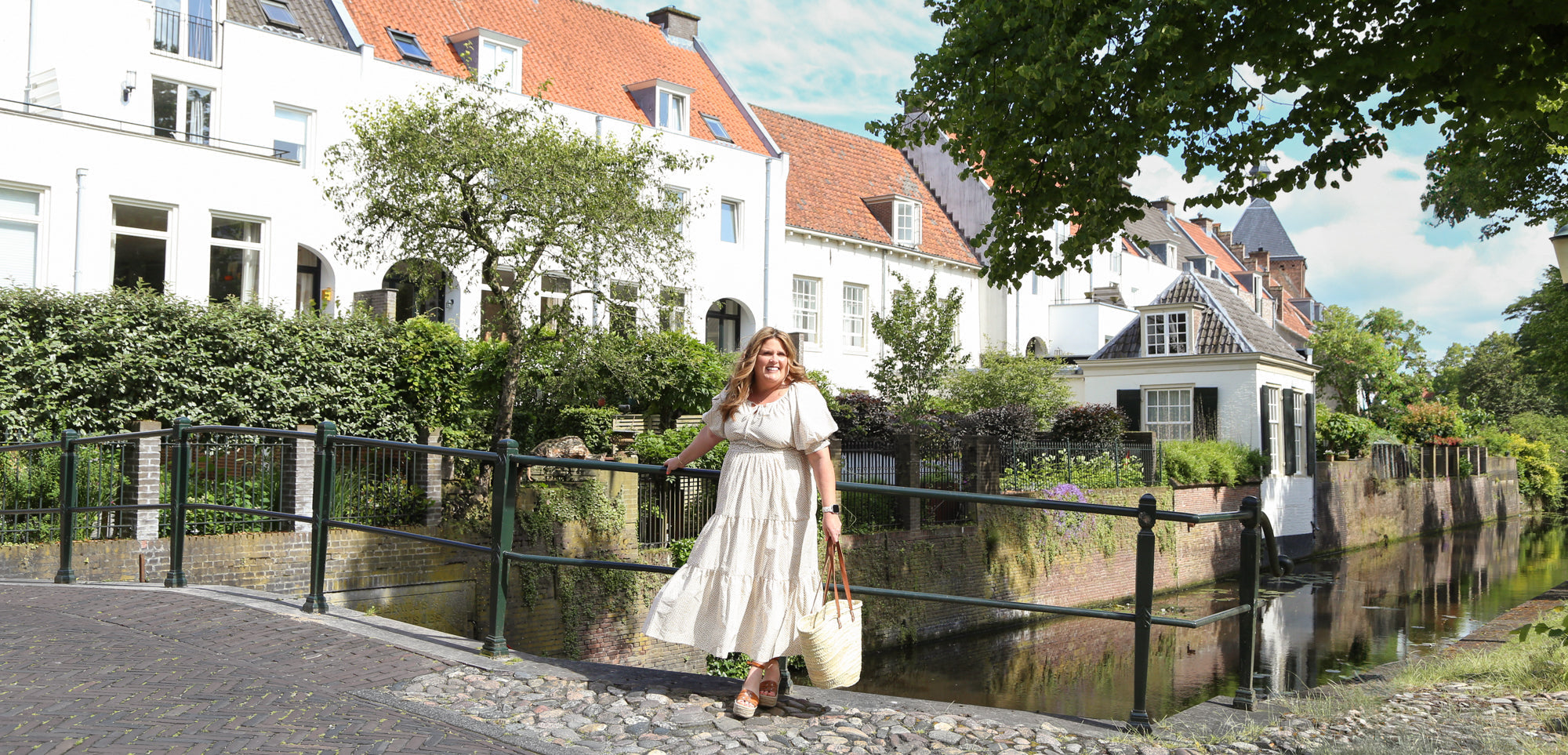If you're around my age, or "born in the 1900's" as my son likes to call us adults, you may remember a time before HGTV, Pinterest, or Instagram—when discovering home trends meant flipping through glossy pages, not scrolling on a screen. We learned the language of style from decor magazines stacked neatly in baskets beside the couch. In my childhood home, Country Living and Victoria Magazine reigned supreme, filled with dreamy room settings and seasonal decorating ideas that felt both magical and inspiring. When Martha Stewart launched Living in 1990, it felt like a turning point—her calm voice and beautiful tutorials ushered in what many would call the golden age of DIY decor. With her guidance, furniture painting and handmade wreaths suddenly felt within reach.
In the ever-changing world of interior design, trends may come and go—but certain styles have a way of staying with us. They quietly evolve, adapting with the times while holding on to what we love most: comfort, character, and charm. If you've ever found yourself drawn to the trends of farmhouse, shabby chic, cottagecore, grandmacore, transitional, or country, read on. These styles may wear different names, but at their heart, they all share something timeless and familiar.

At Interior Delights, we’ve noticed that our most loved pieces—floral pillows, distressed mango woods, wicker baskets, cozy textiles—fit seamlessly across all these styles. So what do they have in common? And why do we keep coming back to them, no matter how the names evolve?
Let’s take a look at how the styles have changed, and why their timeless core continues to inspire so many of today’s most popular decorating trends.
A Thread That Runs Through Time
Whether it’s called farmhouse or grandmacore, cottagecore or transitional, the foundation of these styles remains remarkably similar. They’re all rooted in the same idea: creating a space that feels warm, personal, and a little bit nostalgic. It’s about more than just decor—it’s a feeling of comfort, of soft florals that echo quiet mornings, these styles invite you to slow down and savor the beauty of home.
What connects them?
- A love of vintage charm – Think pitchers full of flowers, block print fabrics, weathered finishes, and decor that tells a story.
- Natural materials – Wood, wicker, stone, linen, and cotton—everything feels earthy, grounded, and real.
- Soft, comforting colors – From creamy whites and dusty blues to sage green and faded rose, the palette is always soothing.
- A layered, collected look – These styles embrace the imperfect and the personal. You’ll find hand-me-downs, flea market treasures, heirlooms, and new finds working together effortlessly.
A Style by Any Other Name
The language around these styles has shifted over time, adapting to cultural movements and changing generations. But if you strip back the labels, you’ll notice the essence hasn’t really changed.
Farmhouse brings us practical charm and rustic simplicity, drawing inspiration from early American homesteads. This style is known for its use of reclaimed wood, shiplap walls, apron-front sinks, and antique-style light fixtures. Think woven baskets on open shelves, black iron accents, and weathered dining tables where family and friends gather. Center the table with an urn vase overflowing with wildflowers for an authentic, welcoming centerpiece. It favors a neutral palette with soft creams, warm grays, and natural wood tones, often accented with ticking stripes, cotton wreaths, or vintage signs that nod to life on the farm.
Shabby Chic, born in the 1980s, introduced a softer, more feminine take on vintage decor with its love of distressed finishes, floral fabrics, and pastel colors. This style often features whitewashed furniture with ornate detailing, ruffled slipcovers, lace-trimmed linens, and delicate chandeliers. It celebrates the beauty of wear and tear—like chippy paint on an old dresser or a faded rose-print pillow that looks like it's been cherished for decades. The overall feel is romantic, whimsical, and gently lived-in.
Country became a broad and beloved term in the 1990s and early 2000s, capturing the essence of rural life with a cozy, approachable look. Hallmarks of this style include gingham curtains, stenciled walls, braided rugs, and plenty of decorative roosters, apples, or stars. Pine furniture, mason jar arrangements, and painted wooden signs added a handcrafted touch. While often more colorful and folksy than farmhouse, country decor always aimed to make a home feel warm, welcoming, and proudly unpretentious.
Grandmacore, a more recent trend, taps into the layered nostalgia of a grandmother’s home—filled with charm, comfort, and memory. It embraces floral wallpaper, embroidered linens, doilies, porcelain figurines, and overflowing bookshelves. You might find a hand-knitted throw draped over a wingback chair, a cabinet of vintage teacups, or framed needlepoint art on the wall. It’s a celebration of the sentimental: collections, keepsakes, and cozy clutter that tells a story and wraps you in warmth.
Cottagecore is the latest chapter in the love letter to countryside living, a whimsical and romantic aesthetic that has blossomed across both homes and social media. It idealizes simple pleasures—wildflower bouquets in old jars, fresh-baked bread cooling on the counter, and reading by candlelight on a rainy day. Cottagecore interiors often include botanical prints, delicate lace curtains, worn wood furniture, and handmade touches like embroidery hoops or vintage quilts. It encourages a slower, more intentional way of living that feels connected to nature and tradition.
Transitional design, one of today’s most enduring interior styles, seamlessly blends traditional and modern elements to create spaces that are both timeless and current. It features a refined balance: clean-lined furniture with classic silhouettes, neutral color palettes softened by layered textures, and subtle patterns that add depth without overwhelming. A transitional room might pair a tufted armchair with a sleek coffee table, or a vintage-inspired rug beneath minimalist lighting. Often described as “classic with a modern twist,” this style is perfect for those who want a home that feels fresh but not fleeting—anchored in comfort and open to evolution.
Cottagecore, in particular, has captivated a new generation in 2025. It brings the dream of simpler times into today’s modern world: fresh-baked bread, open windows, overflowing gardens, and a life closer to nature. But as it evolves, it’s becoming clear—cottagecore isn’t one-size-fits-all.
There are two main interpretations we love:
-
English Cottagecore embraces the storybook charm of tangled wildflower gardens, patchwork quilts, vintage teacups, and cozy clutter. It’s whimsical and nostalgic, perfect for anyone who dreams of rainy afternoons by the fire with a good book.
- French Cottagecore, on the other hand, leans more elegant and restrained. Think weathered limestone floors, soft linen drapes, antique gold mirrors, and rustic wooden beams. It’s countryside sophistication—a little less floral, a little more refined.
Both offer their own brand of countryside beauty. The real question is: Which one feels like home to you?
2025’s Decor Trends That Embrace These Timeless Styles
Even as new buzzwords emerge, today’s home decor trends are leaning straight into the cozy, collected aesthetic that’s been around for generations. Here’s what we’re seeing in 2025 that nods to these classic styles:
- The Return of Dark Woods – Warm, rich finishes are back, replacing the pale woods of Scandinavian minimalism.
- The Rise of Display Cabinets – Whether antique or new, glass-front cabinets are returning as beautiful and practical storage solutions.
- The Growth of Chateaucore – A French spin on cottagecore that blends rustic elegance with noble simplicity.
- Blue Everything – This soft hue is showing up in lighting, linens, and pottery, offering cheerful warmth without overwhelming.
- Grandmacore’s Growing Appeal – Think ruffled curtains, needlepoint, and eclectic wall galleries—it’s cozy, cluttered, and full of personality.
At Interior Delights, Timeless Never Goes Out of Style
From the start, our mission at Interior Delights has been to offer home decor that feels meaningful. Whether you identify with a specific style name or simply know what “feels right,” our collections are designed to help you create a space that feels like you.
Though each of these styles—farmhouse, shabby chic, country, grandmacore, cottagecore, and transitional—has its own distinct flavor, they all share a deep appreciation for comfort, warmth, and personal storytelling. These looks favor lived-in charm over perfection, layering textures, heirlooms, and vintage-inspired touches to create inviting, meaningful spaces. Whether it's the rustic simplicity of farmhouse, the romantic softness of shabby chic, or the quiet elegance of transitional design, they all celebrate home as a sanctuary—filled with character, heart, and a sense of belonging.The name of the style may change. But the soul of it—the warmth, the story, the beauty in the imperfect—that’s forever.
No matter what name it goes by, the style we love at Interior Delights is all about heart. It’s about cozy moments with friends and family, meaningful objects, and the joy of being surrounded by beauty and comfort. Whether you lean English or French, modern farmhouse or transitional, there's room for your story—and we're honored to be part of it.



